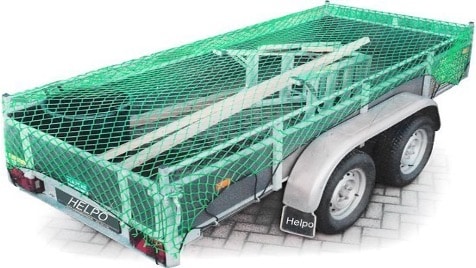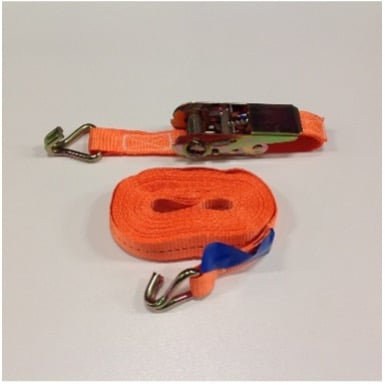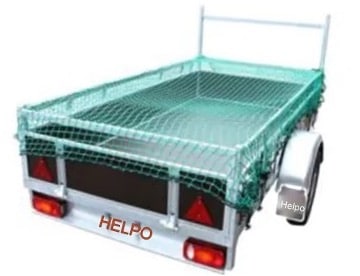How to load your trailer the right way?
The correctly loading your trailer is very important. Not least to prevent cargo loss, or unsafe situations in traffic.
As driver of the towing vehicle, you are responsible for correctly loading the trailer.
You need to ensure that the load cannot shift and that no load is lost.
Here are some key points of interest.

Load distribution
To ensure safety, you need to load the trailer well distributed.
Proper distribution ensures proper nose pressure (+/- 50 kg) and this provides the safest situation.
This is because if the drawbar load is too high or too low, it will affect the steering ability of the towing vehicle, which is hazards on the road can provide.
To get a good drawbar pressure, you need to put the load in your trailer evenly distribute, best just above the axles.
When in doubt, it is better to put the load a little further towards the towing vehicle.
Securing your load
Because you don't want to risk losing cargo along the way, or endangering other weigh users
Straps
The best way to secure cargo on the trailer is through lashing straps.
Every trailer provides a system to which lashing straps can be attached. This way, you can secure your load so tightly and nothing will slide.
When buying straps, keep in mind the load capacity of the tensioning strap. This value indicates how many kilos the strap can tension.

Trailer net
Not every load is suitable for securing with straps.
If your cargo does not lend itself to this, you may also legally Secure with a net.
You attach this net over the entire board wall of the trailer.
A trailer net is perfect for transporting garden waste, for example.
Keep in mind that the holes of the net should not be larger than the largest pieces of cargo you are transporting. You can choose between a fine net (no branches can get caught in this) or a coarse-mesh net (35mm x 35mm).

Trailer canvas, flat sheet or tarpaulin
In addition to nets, there are also sailing To cover your load.
A tarpaulin is stretched over the entire board wall of the trailer, just like a net. This is suitable for loads that could also escape through a net, such as gravel and sand.
Besides, a sail, unlike a net, waterproof.
A hood you cannot attach over the board wall, for this you need a matching metal frame (scaffold).
Protruding load
Sometimes your cargo consists of parts that protrude outside the trailer.
Without additional signalling, a load may protrude a maximum of 1 metre behind the trailer.
If your load protrudes more than 1 metre, you need to mount additional lighting in the form of a lighting bar.
In addition, it is of course forbidden to have sharp loads sticking out.
Some tips:
- Never overload your trailer. This is because it affects your braking capacity and therefore road safety.
- Stick to the maximum permitted speed on the road. This will make you less likely to do manoeuvres that endanger the load.
- Purchase a nose wheel with ball pressure gauge to correctly determine load distribution.

